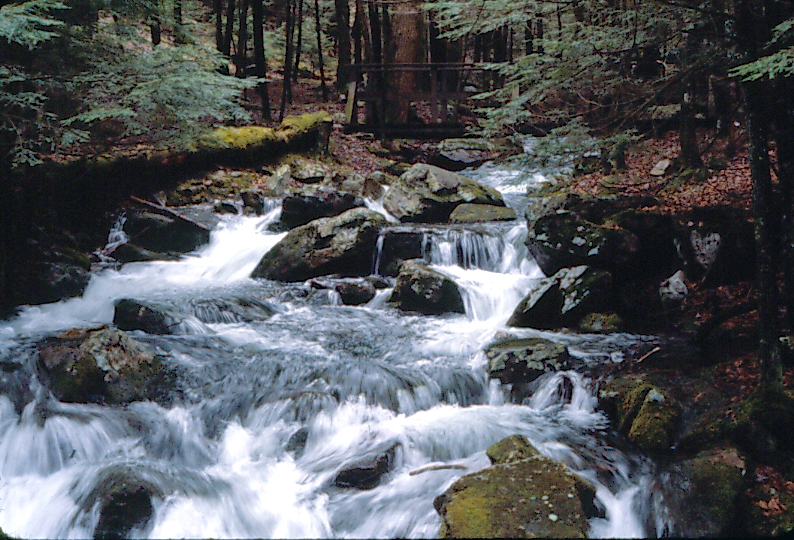
The 200-ha Snyder-Middleswarth Natural Area (40°48’N, 77°19’W), located in Snyder County within the Bald Eagle State Forest, includes one of the few stands of old-growth hemlock-yellow birch forest remaining in Pennsylvania and is among the largest such stands existing within Pennsylvania state forests. Thanks originally to inaccessibility and in 1965 to its preservation as a National Natural Landmark, a 135-ha portion of this forest has never been logged. Old-growth forests have become increasingly rare in North America since the time of European colonization and are particularly rare in central Pennsylvania because of intensive logging for timber and charcoal production during the past 150 years. As a consequence, eastern old-growth forest, and Pennsylvania old-growth forest in particular, exist in small stands that are isolated from other old-growth forests by an intervening matrix of successional forests.
The Snyder-Middleswarth old-growth forest is located in a narrow and steep ravine between two east and west-running ridges; Buck Mountain lies to the north and Thick Mountain to the south. The ravine, created by Swift Run, has well-developed north-facing and south-facing slopes as well as a bottomland. Elevations in the area range from 450 m to 550 m, with slopes varying in steepness from 1-68%. The predominant soils are extremely stony and sandy well-drained loams that have weathered from sandstone and shale. As a consequence, these soils have low to moderate available water capacity.
There are recurrent natural disturbances within this forest. Windstorms, especially those associated with snow or ice events, have toppled a number of the larger hemlock and yellow birch during the past three decades (W. G. Abrahamson, personal observation). Furthermore, the crowns of slope and ridge top trees frequently show evidence of wind and/or ice damage.
Humans are also having impacts on the old-growth forest. Acid precipitation has seriously impacted the area by enhancing the acidity of soils and of Swift Run. The water that enters Swift Run moves through Tuscarora sandstone and soils derived from this hard sandstone. Because these substrates are unable to buffer the strongly acidic precipitation, the portion of Swift Run within the old-growth forest area has a pH too low for fish (e.g., the native brook trout) to survive (low pH releases aluminum, which in turn is toxic to fish and other aquatic organisms). The unnamed creek that joins Swift Run near the parking area has a substantially higher pH because its waters percolate through Juniata sandstone and its derived soil, which has greater buffering ability. As a result, fish such a brook trout do occur as far upstream as the confluence of these creeks.
Humans have introduced several herbivorous insects to North America that threaten the stability of the Snyder-Middleswarth Natural Area. The continued domination of the old-growth forest by hemlock could be appreciably impacted by the hemlock woolly adelgid. This exotic herbivore was first reported in southeastern Pennsylvania in the late 1960s and it has been observed in the Snyder-Middleswarth old-growth forest since 2003 (W. G. Abrahamson personal observation). Gypsy moth outbreaks have occurred periodically within central Pennsylvania since the mid-1970s and have impacted the oak canopies of the south-facing and ridge tops during multiple growing seasons. There is evidence of browsing by white-tailed deer, which likely inhibits regeneration. A recent study of the Snyder-Middleswarth Natural Area detailed the patterns of vegetation and succession within the site (Zawadzkas and Abrahamson 2003).
Area: 250m by 300m = 75,000 sq. m or 7.50 ha
Quadrat: 10m by 10m = 100 sq. m
